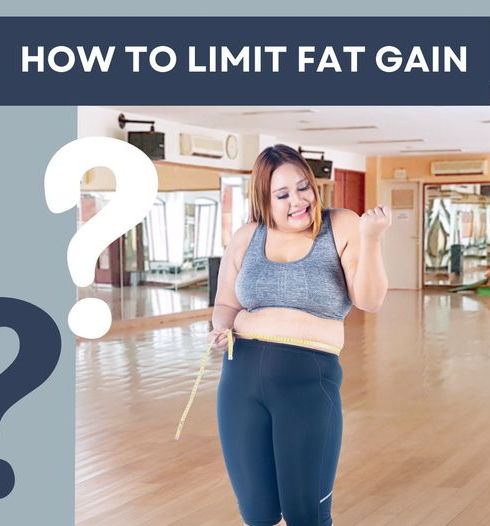Helpful Hints
Full Body Circuit
Equipment needed:
Yoga mat (optional)
Dumbbells (or substitute with household items like water bottles/Soup tins)
Routine:
Jumping Jacks - 1 minute (3 sets)
Push-ups - 3 sets of 10 reps
Bodyweight Squats - 3 sets of 15 reps
Dumbbell Rows (or Bent-over Rows with household items) - 3 sets of 12 reps per arm
Plank - Hold for 30-60 seconds (3 sets)
Russian Twists (with or without a weight) - 3 sets of 15 reps per side
Rest: 1 minute between sets

Helpful Advice
Ever wonder why those pesky pounds seem to settle around your midsection? We might not get to choose where our body stores fat, but we can definitely influence it with our lifestyle choices. Yep, it’s not just about genetics; your lifestyle plays a crucial role too! Dive into these simple yet effective tips to keep fat gain in check: Quality Calories: Fuel your body with whole foods like veggies, fruits, whole grains, and lean proteins. Not only do they keep you fuller for longer, but they're less likely to be stored as belly fat compared to processed junk. Cortisol Control: Stress less! Caffeine, alcohol, and freaking out about work can spike cortisol levels, leading to—you guessed it—more belly fat. Take a breather, literally! Deep breathing can switch your body from "fight or flight" to "rest and digest." Prioritise Sleep: Snooze your way to a slimmer waistline. Skimping on sleep messes with your hormones, making fat storage a lot easier. Aim for those 7-9 hours nightly to keep your hormones in check and cravings at bay. Poor sleep disrupts hormones, making fat loss harder. By mastering these lifestyle tweaks, you can tip the scales in favour of a slimmer, healthier you! Remember, it's not just about shedding pounds—it's about feeling your best inside and out!

Starting a fitness journey can be exciting, but it's easy to make mistakes that could slow progress or cause injury. Here’s how to avoid the most common beginner missteps:
Skipping Warm-Ups and Cool-Downs: Jumping straight into your workout without warming up can lead to injury.
Warming up helps prepare your body for exercise, while cooling down helps it recover. *Take 5-10 minutes to do dynamic stretches or light cardio to prepare your muscles and joints.
Doing Too Much Too Soon: It’s tempting to go all out in the beginning (like trying to lift heavy weights or run long distances), but this can lead to burnout or injury. Start slow, focus on proper form, and gradually increase intensity and duration over time.
Neglecting Rest Days: Your body needs time to recover, especially when you’re new to exercise. Rest days are crucial for recovery and progress so include at least 1-2 rest days per week to allow muscles to heal and grow.
Using Improper Form: Doing exercises with the wrong form can be dangerous. If you’re unsure, start with bodyweight exercises or ask a professional to help guide you.
Focusing Only on Cardio: While cardio is great for weight loss and heart health, don’t forget about strength training. Building muscle boosts metabolism, protects joints and helps burn fat even when you’re at rest. Not Listening to Your Body: Soreness is normal, but sharp pain is not. If something doesn’t feel right, stop and rest. Pushing through pain can lead to injuries.
Inconsistency: Doing a few workouts here and there won’t get you the results you want. Consistency is key to making progress over time, so aim for regular exercise, even if it’s just a few times a week. Comparing Yourself to Others: Everyone’s fitness journey is different. Focus on your own progress and avoid comparing yourself to more experienced gym-goers or fitness influencers. Starting small and building good habits is the best way to avoid burnout and stay on track for long-term success.
Take it slow, be patient, focus on form, listen to your body and remember that slow progress is still progress!

In the pursuit of fitness, it’s all too common to fixate on weight loss. However, reflecting on your journey reveals that progress comes in many forms beyond just a number on the scale.
Here are some meaningful ways to track your fitness progress:
Take Progress Photos: Capturing images of your body over time can reveal changes that the scale may not reflect. These visual markers often highlight your hard work and dedication, showing your transformation.
Track Your Strength: Keep a record of the weights you lift and the number of repetitions you can do in strength exercises. Watching those numbers improve can be incredibly motivating and demonstrates your growing strength.
Monitor Your Endurance: Notice how much longer you can run, cycle, or work out compared to when you started. Increased endurance is a clear sign of progress and a testament to your dedication and effort.
Notice How You Feel: Pay attention to your overall well-being. Are you experiencing more energy, better sleep, or increased confidence? These improvements are key indicators of success in your fitness journey.
Celebrate Small Wins: Whether it’s doing more push-ups, running a bit faster, or feeling more flexible, take the time to celebrate each victory. Acknowledging these small milestones helps you stay motivated and focused on your goals.
Pro Tip: Progress is about more than just the number on the scale. Track your strength, endurance, and how you feel for a more well-rounded view of your fitness journey, allowing you to appreciate all your hard work along the way.



